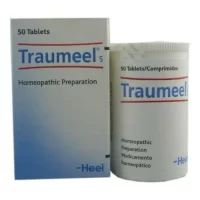$27.00
Manufacturer: India
Purpose: Paracetamol for pain relief, dicyclomine for muscle spasm relief.
Description
Trigan-D (paracetamol, dicyclomine) 500/20 mg. tablets №100
Ingredients
Each tablet contains:
- Paracetamol 500 mg
- Dicyclomine 20 mg
Dosage
The usual dosage for adults is one tablet every 4-6 hours as needed for pain or discomfort.
Indications
Trigan-D tablets are indicated for the relief of mild to moderate pain and discomfort associated with conditions such as headaches, muscle aches, and menstrual cramps.
Contraindications
Do not use Trigan-D if you are allergic to paracetamol or dicyclomine, or if you have glaucoma or myasthenia gravis.
Directions
Swallow the tablets whole with a full glass of water. Do not crush or chew the tablets.
Scientific Evidence
Studies have shown that the combination of paracetamol and dicyclomine in Trigan-D tablets provides effective relief from pain and discomfort. Paracetamol works by inhibiting the production of prostaglandins in the brain, reducing pain perception. Dicyclomine, on the other hand, acts as an antispasmodic agent, relieving muscle spasms in the gastrointestinal tract.
Clinical trials have demonstrated the efficacy of Trigan-D in the management of various painful conditions, with a rapid onset of action and long-lasting relief. The synergistic effect of paracetamol and dicyclomine makes Trigan-D a valuable option for patients seeking fast and effective pain relief.
Additional Information
It is important to follow the recommended dosage and not exceed the maximum daily dose to avoid potential side effects. If you experience any adverse reactions or if your symptoms persist, consult a healthcare professional for further evaluation.
Keep Trigan-D tablets out of reach of children and store them in a cool, dry place away from direct sunlight. Do not use this medication after the expiration date printed on the packaging.







Recent Reviews